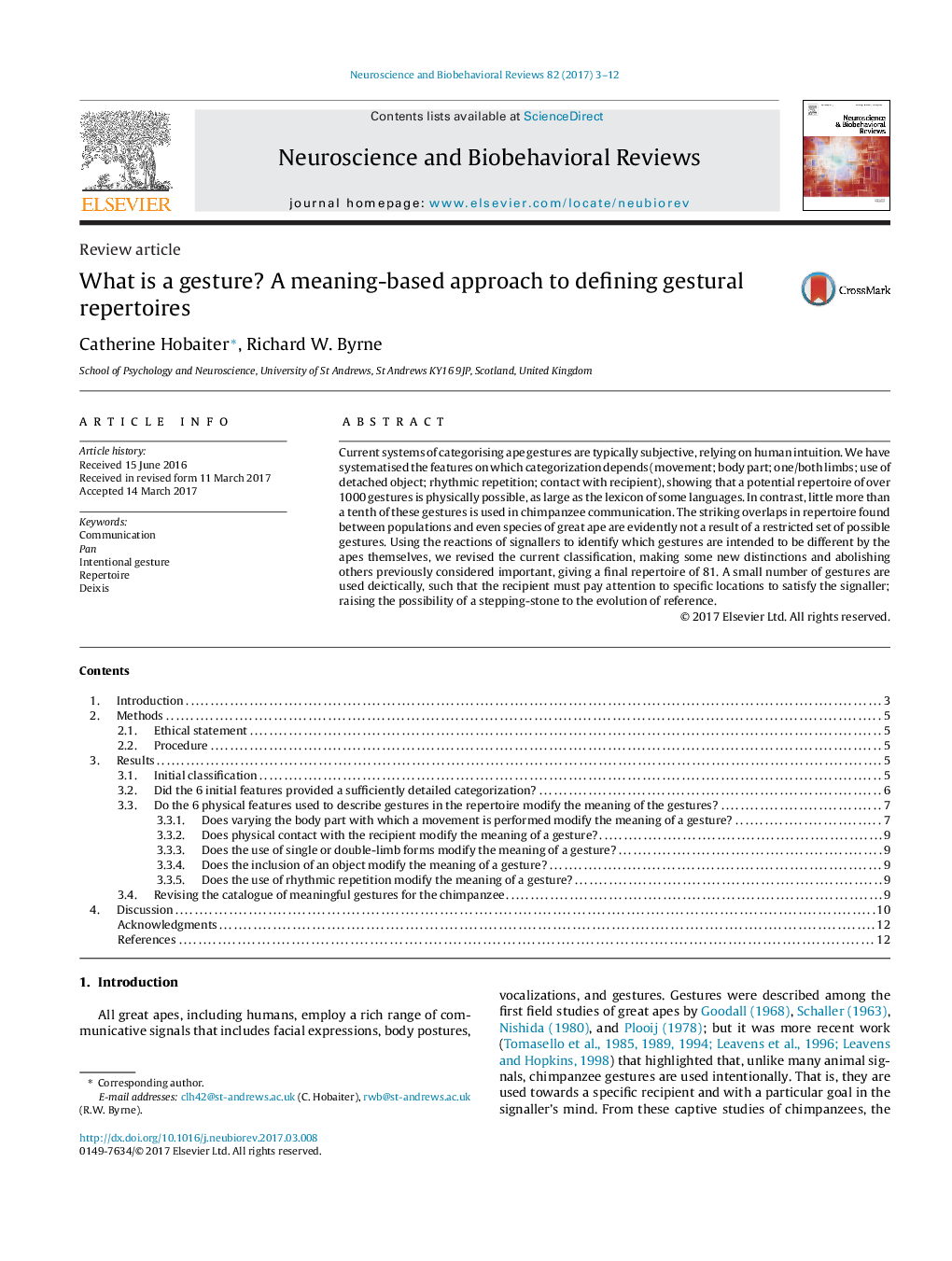| Article ID | Journal | Published Year | Pages | File Type |
|---|---|---|---|---|
| 7302536 | Neuroscience & Biobehavioral Reviews | 2017 | 10 Pages |
Abstract
Current systems of categorising ape gestures are typically subjective, relying on human intuition. We have systematised the features on which categorization depends (movement; body part; one/both limbs; use of detached object; rhythmic repetition; contact with recipient), showing that a potential repertoire of over 1000 gestures is physically possible, as large as the lexicon of some languages. In contrast, little more than a tenth of these gestures is used in chimpanzee communication. The striking overlaps in repertoire found between populations and even species of great ape are evidently not a result of a restricted set of possible gestures. Using the reactions of signallers to identify which gestures are intended to be different by the apes themselves, we revised the current classification, making some new distinctions and abolishing others previously considered important, giving a final repertoire of 81. A small number of gestures are used deictically, such that the recipient must pay attention to specific locations to satisfy the signaller; raising the possibility of a stepping-stone to the evolution of reference.
Keywords
Related Topics
Life Sciences
Neuroscience
Behavioral Neuroscience
Authors
Catherine Hobaiter, Richard W. Byrne,
